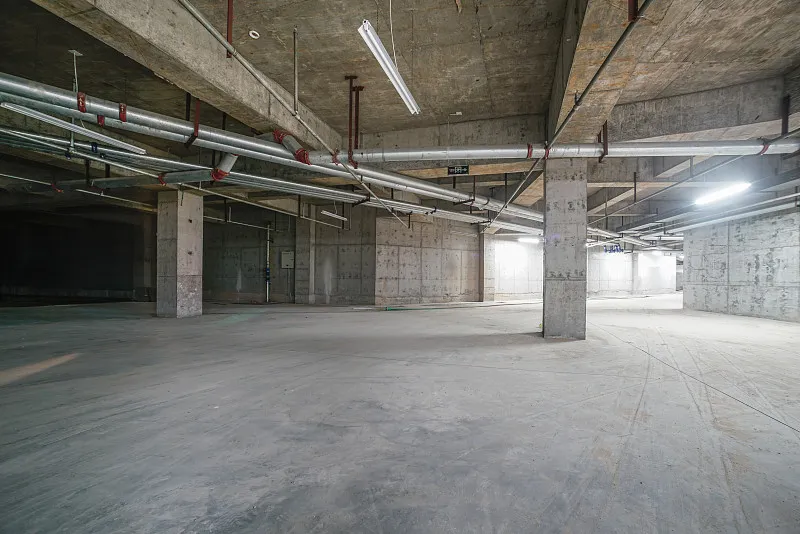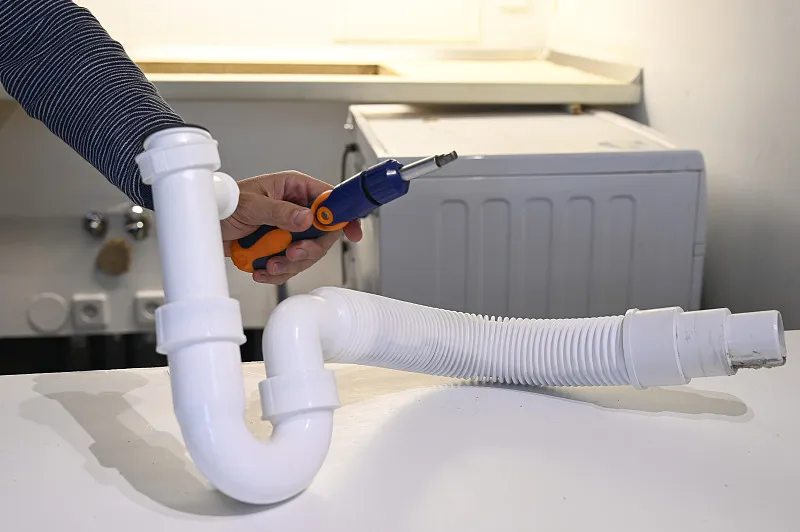Introduction PPR Pipe
The price of materials used in essential infrastructure, such as PPR Pipe, plays a significant role in the overall cost of construction, plumbing, and water management systems. In recent months, the U.S. Department of Justice (DoJ) has launched an investigation into potential price-fixing within the PPR pipe market, raising concerns about market manipulation and its impact on consumers and businesses alike. The investigation is focuse on whether manufacturers of PPR pipes have colluded to artificially inflate prices, thereby undermining fair competition and increasing costs for end users.
This article explores the ongoing investigation, its potential implications for the PPR pipe industry, and the broader issues of market competition and transparency in the construction materials sector. It will also delve into the role of PPR pipes in global infrastructure and how the investigation may affect the supply chain and pricing dynamics in the industry.
Understanding PPR Pipe and Their Role in the Market
Before diving into the investigation itself, it’s important to understand what PPR pipes are and why they are critical to various industries. PPR pipes, or Polypropylene Random Copolymer pipes, are a type of thermoplastic piping commonly used in plumbing, water distribution systems, and industrial applications. Known for their durability, resistance to corrosion, and ease of installation, PPR pipes are considere an ideal solution for both residential and commercial piping systems.
The popularity of PPR pipes has grown significantly due to their long lifespan, which can exceed 50 years, and their ability to withstand high temperatures and pressures. They are also highly resistant to the chemicals commonly found in water systems, which makes them ideal for transporting both potable water and wastewater. As such, the PPR pipe market has become an essential part of the construction and plumbing industries worldwide, with applications in both new constructions and infrastructure renovation projects.
Given their importance in infrastructure projects, PPR pipes have become a critical component in global supply chains. This makes any disruption to the market, such as potential price-fixing, a matter of concern for businesses that rely on these pipes for building and renovation projects.
The Allegations: Price-Fixing in the PPR Pipe Market
Price-fixing is the illegal practice of competitors in an industry agreeing to set prices at a certain level, rather than allowing the forces of supply and demand to determine the market price. This practice undermines competition and can lead to inflated prices for consumers, reducing overall market efficiency and fairness. In the case of the PPR pipe market, the DoJ is investigating whether certain manufacturers have been involve in a scheme to inflate the price of PPR pipes, potentially through collusion or other anti-competitive behaviors.
The investigation stems from complaints raised by businesses in the construction and plumbing industries who have noticed rising costs for PPR pipes in recent years. Some companies allege that the price hikes are not attributable to supply chain disruptions, raw material shortages, or natural market fluctuations, but rather to deliberate actions by manufacturers. These complaints have prompted the DoJ to take a closer look at the pricing mechanisms in the PPR pipe industry.
One of the key areas of concern is the role of large manufacturers in the PPR pipe market, which dominate global production. With a small number of key players controlling much of the supply, there is a concern that price-fixing could be taking place without significant oversight. These large companies, which often operate in a global market, may have the ability to influence prices in a way that could hurt smaller competitors and consumers alike.

DoJ Investigation: What We Know So Far
As of now, the DoJ’s investigation is still in its early stages, but it has already raised important questions about the state of competition in the PPR pipe market. The investigation is focusing on whether there is evidence of price-fixing, collusion, or other anti-competitive behaviors that may have led to inflated prices. The DoJ has issued subpoenas to several major manufacturers of PPR pipes, seeking information on pricing strategies, contracts, and communications between companies.
Investigators are also examining whether there are any signs that manufacturers have been coordinating their pricing decisions to create artificial price increases. This could involve manufacturers agreeing on price hikes at the same time or sharing sensitive pricing information in violation of antitrust laws. If evidence of price-fixing is found, it could lead to significant legal and financial repercussions for those involved.
The DoJ is working with other regulatory bodies, including the Federal Trade Commission (FTC), to monitor the situation and gather additional evidence. In the case that price-fixing is prove, the manufacturers involved could face heavy fines, sanctions, and potentially even criminal charges. In addition to the potential legal consequences for the companies involved, the investigation could also lead to increased scrutiny of the PPR pipe market as a whole.
Why Price-Fixing in the PPR Pipe Market Matters
Price-fixing in the PPR pipe market could have significant consequences for several stakeholders. The construction and plumbing industries, which rely heavily on PPR pipes for various projects, could face higher costs as a result of artificially inflated prices. This, in turn, could increase the overall cost of construction projects, making it more expensive to build homes, commercial buildings, and infrastructure systems. For businesses operating in the plumbing and construction sectors, these increased costs could reduce profitability and lead to higher prices for consumers.
Moreover, price-fixing stifles competition, which is essential for driving innovation, improving product quality, and ensuring fair pricing. If a small group of companies control pricing through collusion, it reduces the incentives for other companies to innovate and offer competitive pricing. This can lead to a stagnant market where consumers have fewer choices, and prices remain artificially high.
Additionally, the global supply chain for PPR pipes could be disrupte if manufacturers face legal action or if new regulations are put in place to increase transparency in pricing. This could affect both the availability and cost of PPR pipes, especially in regions that rely on imports from large manufacturers.
Potential Impact on the Global PPR Pipe Market
If the DoJ investigation leads to legal action, it could have a ripple effect on the global PPR pipe market. For one, manufacturers involved in price-fixing could face heavy penalties, which could disrupt their operations and affect their ability to supply PPR pipes to the market. This could lead to short-term supply shortages or fluctuations in pricing as companies adjust to the legal consequences.
On a broader scale, the investigation could prompt other countries to look more closely at their own PPR pipe markets and consider tightening regulations around pricing practices. If price-fixing is found to be widespread, it could lead to increased regulation and oversight in the global market for PPR pipes, ensuring that companies operate more transparently and competitively.
In the long run, if the investigation succeeds in curbing price-fixing, the PPR pipe market could become more competitive, with a greater diversity of suppliers and more fair pricing for consumers. This could lead to innovation in the industry, as companies strive to offer better products at competitive prices, benefiting both businesses and consumers.
Conclusion
The DoJ’s investigation into potential price-fixing in the PPR pipe market is a significant development in the plumbing and construction industries. As PPR pipes are essential to infrastructure projects worldwide, any disruption to the market could have far-reaching consequences. The investigation is still in its early stages, but its outcome could reshape the dynamics of the PPR pipe market, increase transparency, and improve competition for the benefit of businesses and consumers.
Whether or not price-fixing is find to be a widespread issue, the investigation highlights the importance of maintaining a fair and competitive market for materials used in critical infrastructure. As the investigation progresses, all eyes will be on the PPR pipe market to see how it is affected by regulatory scrutiny and potential legal action.
Frequently Asked Questions (FAQs)
1. What are PPR Pipe, and why are they important?
PPR pipes are made from a thermoplastic material called polypropylene random copolymer. They are widely used in plumbing and water distribution systems due to their durability, resistance to corrosion, and long lifespan. PPR pipes are an essential part of many infrastructure projects worldwide.
2. What is price-fixing, and why is it illegal?
Price-fixing is the illegal practice of companies agreeing to set prices at a specific level rather than letting market forces determine prices. It is considere anti-competitive and can lead to inflated prices, reducing consumer choice and harming the economy.
3. What is the DoJ investigating in the PPR Pipe market?
The U.S. Department of Justice (DoJ) is investigating whether certain manufacturers in the PPR pipe market have been involve in price-fixing or other anti-competitive practices. The investigation seeks to determine whether companies have colluded to inflate prices, undermining fair competition.
4. How could price-fixing affect the PPR Pipe market?
Price-fixing could lead to artificially inflated prices for PPR pipes, increasing costs for businesses and consumers. It could also reduce competition, stifling innovation and leading to fewer choices in the market.
5. What will happen if price-fixing is found in the PPR Pipe market?
If price-fixing is proven, the companies involve could face significant legal and financial penalties, including fines and sanctions. The market could also be subject to increased regulatory scrutiny, potentially leading to more transparent pricing practices in the future.


















